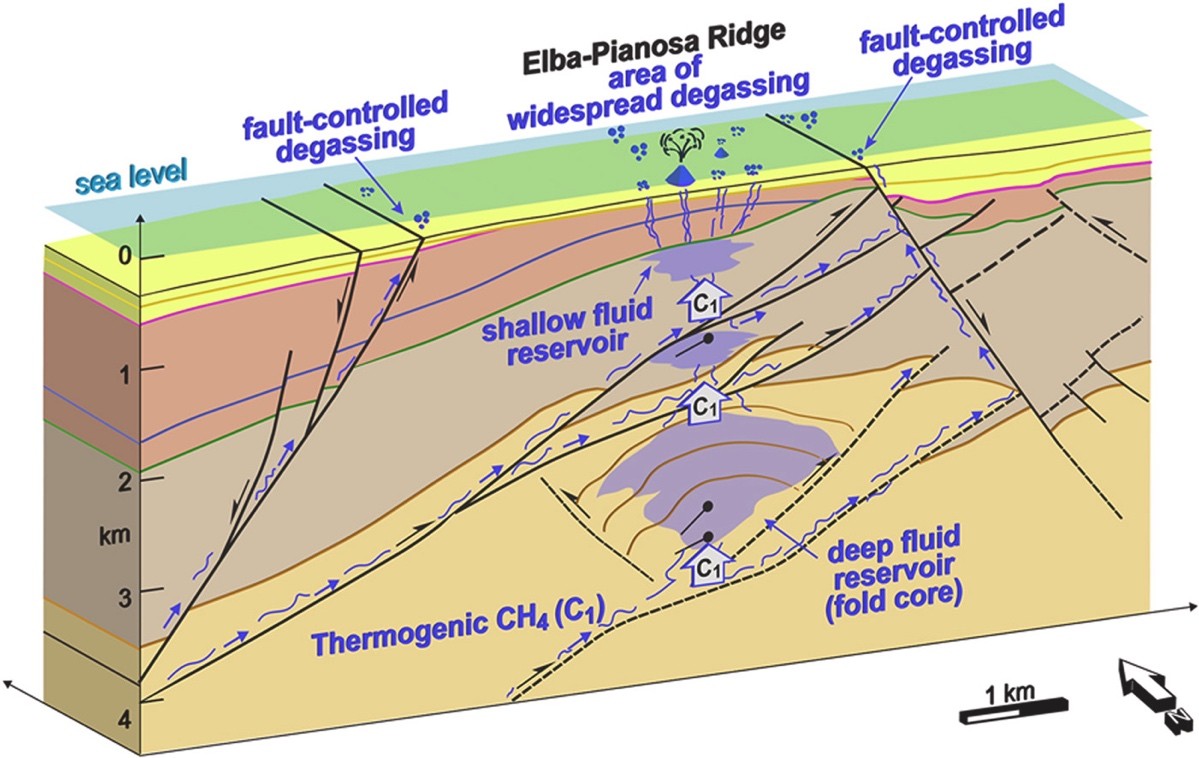Tectonic controls on the submarine Scoglio d’Affrica mud volcanoes (Northern Apennines hinterland)
Four submarine mud volcanoes were discovered in the northernmost Tyrrhenian Basin, Italy, following the eruption of one of them in 2017 near the Scoglio d’Affrica Islet. The eruption occurred a few months possibly triggered by a seismic sequence that hit central Italy (Mwmax 6.5–6.6). These mud volcanoes lie on top and at the margins of a morpho-structural high known as the Elba-Pianosa Ridge (EPR). The structural setting of the Elba-Pianosa Ridge (EPR) plays an important role in the storage and subsequent upward migration of deep-sourced fluids. The results support the hypothesis that the EPR corresponds to an antiformal stack structure bounded by high-angle normal faults at its margins. Wellbore data indicate the presence of significant overpressures associated with an increase in hydrocarbon gases in the core of the antiform, which suggest the existence of a deep-seated fluid reservoir. The lesson from this study is that mud volcanoes can also form in the innermost part of a thrust belt, where compressional stresses have long since faded. Inactive anticlines still have the capacity to collect and pressurise deep-sourced fluids, which can accumulate into the fold core and ultimately generate mud volcanoes.
Reference
Bonini, M., Del Ventisette, C., Lanari, R., Lupi, M., Maestrelli, D., Nirta, G., ... & Montanari, D. (2025). Tectonic controls on the submarine Scoglio d’Affrica mud volcanoes (Northern Apennines hinterland). Marine and Petroleum Geology, 107467. https://doi.org/10.1016/j.marpetgeo.2025.107467.
For more info: Domenico Montanari (domenico.montanari@cnr.it) e Marco Bonini (marco.bonini@cnr.it).
